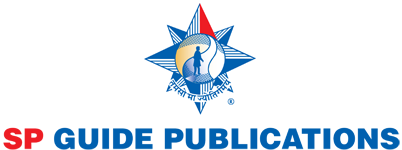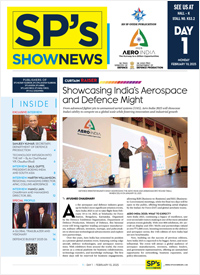- Prime Minister Narendra Modi inaugurates Aero India 2023 in Bengaluru; Releases Commemorative Stamp
- Defence Secretary meets delegations from Saudi Arabia, USA and Oman on the sidelines of Aero India 2023
- Foreign Ministers of 32 countries to attend Aero India 2023
- Embraer showcases the C-390 Millennium at Aero India 2023
Reducing the threat of runway accidents

RUNWAY SAFETY AS A CONTINUED CONCERN
Air traffic around the globe is increasing, with India anticipated to be the second largest air traffic market in the next decade. Simultaneous to the increase in air traffic, at least two runway excursions, such as veer-offs and overruns, take place each week worldwide. According to a January 2013 report by the International Civil Aviation Organisation (ICAO), runway excursions are a persistent problem and their numbers have not decreased in more than 20 years.
Globally in 2012, there were 106 runway excursions, many of them causing planes to be destroyed and lives to be lost. In addition to runway excursions, runway incursions, or when there is a loss of safe distance between a plane and another object (including other planes, people, vehicles, etc.), are a major cause for concern globally. Runway excursions have impacted India in a significant way and along with two high profile runway incursions in 2009 and 2011 the focus has turned to runway safety.
Runway accidents are the most common type of aviation accident, with nearly 20 per cent of reported accidents happening in the form of a runway excursion, according to a report by the International Air Transport Association (IATA). This is driving a global demand from the aviation industry to reduce and prevent runway accidents.
THE DANGERS OF RUNWAY ACCIDENTS
Given the importance of runway safety, there is a need to look at some of the reasons for runway mishaps. Aircrafts and their respective flight crew operate in very complex airport environments, often flying in adverse weather conditions where there is extremely low visibility. Apart from bad weather, some other causes for runway excursions and incursions include a loss of situational awareness, lack of proper signage along the taxiway, airport congestion on that day as well as poor flight crew execution.
Since 2008, there have been about three incidents a day in the US alone where a plane or a vehicle goes onto an active runway by mistake, which has resulted in an average of 1,000 incidents a year. Apart from this, what’s more startling is the fact that this number has held steady for the past four years. In a small number of these cases, a catastrophic collision has only been narrowly avoided, sometimes only due to sheer luck.
MAKING RUNWAYS SAFER
The key to reducing runway accidents lies in a combination of technology that increases safety during approach, landing, taxi and take-off as well as training for pilots using realistic scenarios that will prepare them to make the right decisions and execute the correct manoeuvres.
Newer technologies exist that focus on breaking the chain of events leading to a runway incursion or excursion. Two such technologies are Honeywell Aerospace’s SmartRunway and SmartLanding.
Both products offer an expanded number of available alerts and added visual messaging to support both “heads-up” and “quiet cockpit” operations. A simple software load, only requiring a minimal amount of aircraft downtime and pilot training, makes it a costeffective simple install on the flight deck. SmartRunway and SmartLanding are available now for airlines and business aviation aircraft currently equipped with Honeywell’s MK V or MK VII Enhanced Ground Proximity Warning System (EGPWS).
Honeywell’s SmartRunway is the next-generation upgrade to the Honeywell Runway Awareness and Advisory System (RAAS). SmartRunway improves situational awareness by providing timely aural advisories - with new advisories and now graphical alerts to the flight crew and advises them of their position during taxi, take-off, final approach, landing and rollout.
SmartLanding is designed to help reduce the risk of a runway excursion by providing timely alerts to crew members when the aircraft is approaching the runway too high, too fast or is not configured properly - common components of an unstable approach. SmartLanding features callouts for long landing if the aircraft extends beyond a predetermined touch down zone, together with callouts of runway distance remaining during landing and rollout.
Honeywell Aerospace has showcased the benefits of safety technologies such as SmartRunway and SmartLanding, which would enable airports around the globe to become hazard free through the reduction in incidents of runway excursions and incursions. With continued growth of air traffic and challenges that are attached to it, we are only going to see increased demand from airlines for systems such as SmartLanding and SmartRunway that can cost-effectively contribute to the safety of people both on-the-ground as well as in the air





